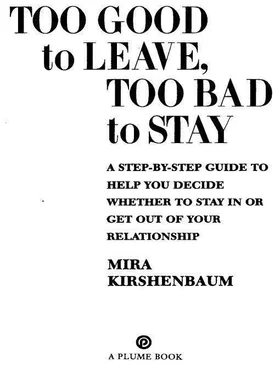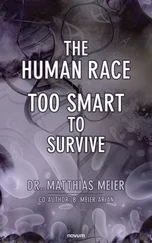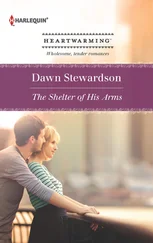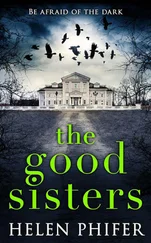Kirshenbaum, Mira - Too Good to Leave, Too Bad to Stay
Здесь есть возможность читать онлайн «Kirshenbaum, Mira - Too Good to Leave, Too Bad to Stay» весь текст электронной книги совершенно бесплатно (целиком полную версию без сокращений). В некоторых случаях можно слушать аудио, скачать через торрент в формате fb2 и присутствует краткое содержание. Жанр: Психология. Описание произведения, (предисловие) а так же отзывы посетителей доступны на портале библиотеки ЛибКат.
- Название:Too Good to Leave, Too Bad to Stay
- Автор:
- Жанр:
- Год:неизвестен
- ISBN:нет данных
- Рейтинг книги:3 / 5. Голосов: 1
-
Избранное:Добавить в избранное
- Отзывы:
-
Ваша оценка:
- 60
- 1
- 2
- 3
- 4
- 5
Too Good to Leave, Too Bad to Stay: краткое содержание, описание и аннотация
Предлагаем к чтению аннотацию, описание, краткое содержание или предисловие (зависит от того, что написал сам автор книги «Too Good to Leave, Too Bad to Stay»). Если вы не нашли необходимую информацию о книге — напишите в комментариях, мы постараемся отыскать её.
Too Good to Leave, Too Bad to Stay — читать онлайн бесплатно полную книгу (весь текст) целиком
Ниже представлен текст книги, разбитый по страницам. Система сохранения места последней прочитанной страницы, позволяет с удобством читать онлайн бесплатно книгу «Too Good to Leave, Too Bad to Stay», без необходимости каждый раз заново искать на чём Вы остановились. Поставьте закладку, и сможете в любой момент перейти на страницу, на которой закончили чтение.
Интервал:
Закладка:
And like all the other things you do in your ambivalence, distance only serves to make it worse. Now your ambivalence has taken on a life of its own.
THE BALANCE-SCALE APPROACH
What is it about relationship ambivalence that gets us stuck in it and keeps us stuck in it? Good question! The people I’ve worked with over the years are a smart bunch, and for a long time it didn’t make sense to me that women and men with all kinds of street smarts and academic smarts and every other kind of smarts could be so stuck.
I figured, wearing my researcher hat, that with all the differences among all these people there had to be something they shared deep down that was responsible not for their feeling iffy about their partners—we’ve all felt that from time to time—but for their getting stuck in feeling iffy, so stuck that they couldn’t find their way out.
I discovered that everyone stuck in relationship ambivalence shares an image so powerful, so controlling, that it shapes their entire experience of deciding what to do about an iffy relationship: the image of a balance scale. You know—the kind of scale the figure of Justice holds in her hand in front of the Supreme Court, with a pan on one side and a pan on the other side, all set up for weighing the evidence, pro and con. You might have used a scale like this yourself in high school chemistry.
The image of the balance scale lies at the heart of how most people deal with the stay-or-leave decision. It’s what I call the balance-scale approach. You try to figure out whether to stay or leave by piling up all the evidence about your partner on a kind of giant scale and seeing how it balances out:
On one side you pile up all the evidence for staying and against leaving: all the good things about your relationship, all the things you hope for, all the things that make leaving seem scary.
On the other side you pile up all the evidence for leaving and against staying: all the bad things in the relationship, all your fears, all your hopes for being on your own again.
All by yourself, you do what the opposing lawyers do at a trial, each lawyer piling up evidence on one side or the other. Then after acting as lawyer for both sides, you act as the jury, looking to see which pile of evidence weighs more. It’s instinctive. It’s universal. And it’s guaranteed to drive you crazy.
Weighing the pros and cons of staying or leaving isn’t like weighing a can of tomatoes against a box of cornflakes. It’s like placing puppies on a teeter-totter: everything constantly moves and shifts, nothing stays pinned down.
When it comes to relationships, the balance-scale approach is the problem, not the solution. It gets us into trouble, not out of it. How can you weigh the things you know about your relationship in the present against a huge uncertain future? How can you weigh a problem that’s bad for you against the knowledge that a lot of people have this problem but don’t seem to be breaking up their relationships over it? How can you weigh a problem that makes you want to scream today against the possibility that it won’t bother you so much tomorrow?
With the balance-scale approach pieces of evidence keep sliding in and out of the picture. You try to add things up that don’t add up, to compare things that can’t be compared. Like a tenderfoot in the woods, the more you try to find your way, the more lost you get.
Carol’s Tale
Just look at the balance-scale approach in action. Here’s how Carol described it:
Two weeks ago Tom was so nice to me. I wish it could be like that all the time. But then last week he went back to being the way he usually is, where he’s so nasty and everything I do is wrong and he keeps putting me down and making my life miserable. How do I add those up? He leaves me alone to watch sports all the time and he yells at me if I want to talk about our problems, but sex is still okay with him. What does that add up to? To make it even more confusing, sometimes things are going well with me and the things I have trouble with about him don’t bother me so much.
There are more details, but Carol’s provided a good sketch of some of the pros and cons in her relationship. Is it clear to you what she should do? I don’t think it’s clear to anyone. Weighing the pros and cons just sucks you in to adding more and more things to the balance, and every time you add something the picture gets more confusing.
Therapists do this, too. One way we get suckered into using the balance-scale approach is that we try so hard to avoid playing the blame game when people come to us for help. So whenever we see something “bad” that one person does, we look to see what the other person does to elicit it. For instance, if you say your partner’s nagging drives you crazy, we’ll say, okay, maybe your partner’s nagging but maybe you’re not listening.
But when you’re helping one person decide whether it’s best to stay or leave, you’ve got to look for the fly in the ointment, and it doesn’t matter who put it there. The balance-scale approach doesn’t work for anybody. I don’t think you’d be reading these words if the balance-scale approach had worked for you.
So no more relationship ambivalence, starting right now. No more putting your relationship on trial. No more weighing huge, unwieldy piles of evidence pro and con. No more listening to the voices on both sides producing endless arguments and very little clarity. Fortunately, there’s a much better alternative, one that will help you see straight through to the truth about your relationship.
Part II
THE SOLUTION
3
Enough Is Enough
Issue: Danger Signs
DIAGNOSTICS
Here’s how to find your way out of relationship ambivalence. Don’t put your relationship on trial the way lawyers do. Make a diagnosis the way doctors do.
That’s what we’ll do here. We’ll ask one question at a time, step by step, responsibly searching for that one fact, that one piece of evidence about your relationship that makes clear what’s best for you to do. And it’s all based on what research shows are the experiences of other people in situations like yours.
It’s like going to the doctor for stomach pains. If she can diagnose appendicitis after some questions and a few tests, you’re all set. You don’t need to go through every test and weigh every possible piece of evidence pro and con. If your answer to one question doesn’t provide a diagnosis—“No, doctor, it doesn’t hurt there”—you move on to the next question or test until you find the smoking gun that points to a specific ailment.
It works much the same way here. Instead of balancing pros and cons, we’ll try to arrive at a diagnosis of your relationship. At each step you’ll answer a question about an issue between you and your partner. In most cases it’ll be a straightforward, easy-to-answer, yes-or-no question. Depending on your answer, you may be able to get a clear indication right then and there of whether it’s best for you to stay or leave. You’ll have found out what’s real about your relationship without needing to go further.
One Step at a Time
The order of the questions is carefully arranged. The main principle, as with any diagnostic procedure, is to deal with the clearest, most obvious issues first. For example, if your TV is on the fritz, the repairperson will check if you’ve forgotten to plug it in or if the cable box is properly connected before looking into the subtler malfunctions deep in the electronic bowels of the set.
In the same way, earlier diagnostic questions here deal with clearer, more obvious issues, and later questions deal with more nuanced issues. By the end we’ll have dealt with all the major issues that might bother you—from intimacy to power, from affairs to lying, from sex to money, from your hurts from the past to your hopes for the future, from signs you really hate each other to signs you really belong together. We’ll investigate everything that goes on in relationships from the point of view of what makes them too bad to stay in or too good to leave.
Читать дальшеИнтервал:
Закладка:
Похожие книги на «Too Good to Leave, Too Bad to Stay»
Представляем Вашему вниманию похожие книги на «Too Good to Leave, Too Bad to Stay» списком для выбора. Мы отобрали схожую по названию и смыслу литературу в надежде предоставить читателям больше вариантов отыскать новые, интересные, ещё непрочитанные произведения.
Обсуждение, отзывы о книге «Too Good to Leave, Too Bad to Stay» и просто собственные мнения читателей. Оставьте ваши комментарии, напишите, что Вы думаете о произведении, его смысле или главных героях. Укажите что конкретно понравилось, а что нет, и почему Вы так считаете.












